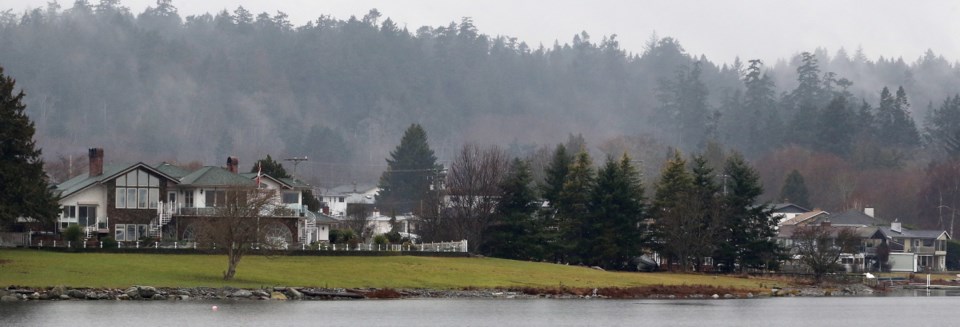Pockets of improvement in average annual property assessment numbers in Greater Victoria are a sign of a stable real estate market, says B.C. Assessment’s assessor for the capital region.
Reuben Danakody said increases in the core municipalities and along the Saanich Peninsula are a sign the soft post-recession market is turning around. The bump comes after two consecutive years of decreases across the board.
“We are starting to see some positive signs of price increases in some markets,” he said. “Most of the price corrections have all taken place in the last two years or so and now we are seeing stable pricing — things that are priced right are moving fast.”
Going forward, he said, the market’s response — and, ultimately, house prices — will depend largely on what happens with mortgage rates.
“They are really attractive right now, and if that continues, the market recovers and the job market improves slowly, at a minimum we will see a stable market,” he said. “We hope to see some consistent, strong and steady increases.”
B.C. Assessment released its assessment figures for 2014 on Friday. Six of the region’s 13 municipalities had a slight increase in the average assessment of single-family homes as of July 2014.
Victoria, Esquimalt, Saanich (school district 61), Oak Bay, View Royal and Sidney recorded small increases, while North and Central Saanich showed no change.
The biggest increase was seen in Oak Bay, where the average single-family home was assessed at $686,000, up 2.85 per cent from last year.
Victoria saw an increase of 1.90 per cent to $536,000, Esquimalt had a 1.63 per cent jump to $499,000, Saanich (school district 61) was up 1.21 per cent to $503,000, Sidney increased 1.17 per cent to $432,000, and View Royal moved up 0.23 per cent to $430,000.
Colwood, Saanich (school district 63), Langford, Metchosin, Sooke, Highlands, the Gulf Islands, and Victoria rural (Malahat, Otter Point, Sherringham/ Port Renfrew, East Sooke, and Malahat to Port Renfrew) all saw a drop in the average assessment.
“In the Western Communities, we’re seeing some decreases and some softening,” Danakody said. “In previous years, the Western Communities held pretty well and the demand was still there while Victoria was slowing down.
“But what you are seeing now is that region taking a break, though it’s not very substantive.”
The largest decrease in average property assessment was in Sooke, which fell 4.17 per cent to $299,000. Colwood dropped 2.39 per cent to $490,000.
Highlands dropped 2.22 per cent to $441,000, Metchosin slipped 1.12 per cent to $530,000, and Langford fell 0.25 per cent to $407,000.
Danakody said those small drops are minor corrections.
According to B.C. Assessment, owners of commercial properties in the capital region will see average changes of between two and six per cent this year.
The increases are due to investors seeing Victoria as a strong market, Danakody said.
“They are buying, when it comes to major commercial properties, a long-term income stream of rental income, and they are also buying with the hope that down the road they see capital increases as well,” he said, noting the increase in both building of new inventory and renovating existing buildings is testament to Victoria’s strong economy.
B.C. Assessment analyzes all sales in the province and values groups of similar properties based on those numbers.
It also does an inventory of the property by doing site visits to check the size, square footage and finish matches existing records. Staff also take into account municipal building permits and use desktop technology — including mapping data and street-front imagery — to ensure property information is up to date.
The entire capital region assessment roll increased slightly from $88.8 billion to $90.5 billion this year. B.C. Assessment said more than $1.09 billion of the total roll is a result of subdivisions, rezoning and new construction.
Property owners in the region will get their 2015 assessment notices in the next few days. They have until Feb. 2 to submit a notice of complaint to appeal their assessment.
Review panels, which are independent of B.C. Assessment, are appointed annually by the Ministry of Community, Sport and Cultural Development, and typically meet between Feb. 1 and March 15 to hear formal complaints.
Last year, less than one per cent of the nearly 140,000 assessments in Greater Victoria were appealed.



